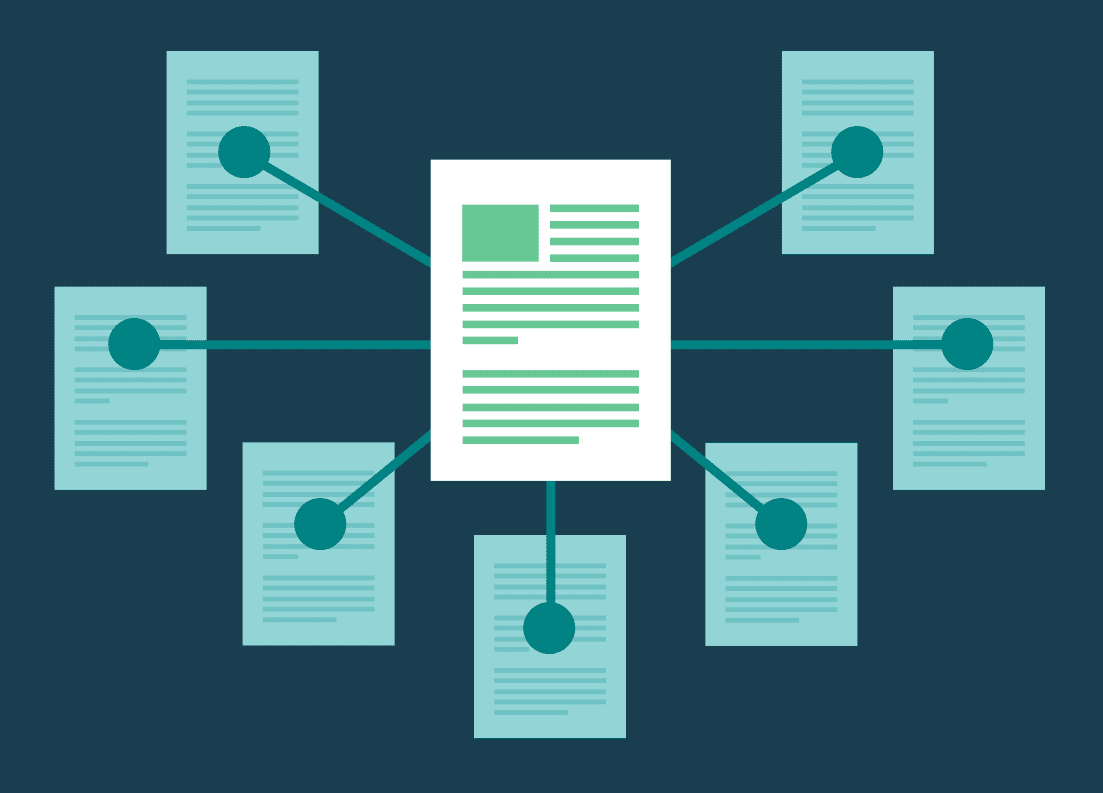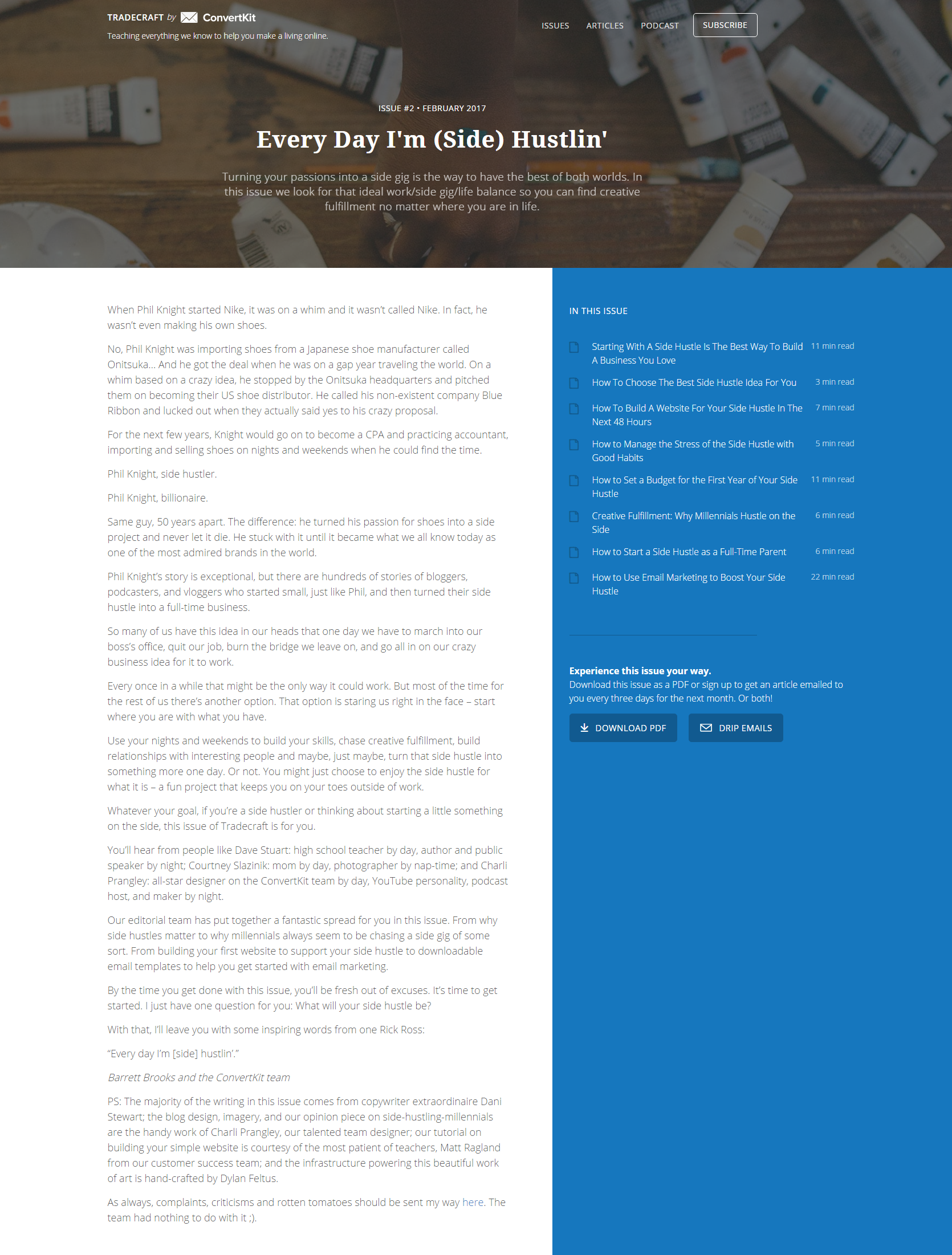This is part of our series on hub and spoke content marketing. Begin here: Executing The Hub & Spoke Content Marketing Strategy.
Like we’ve said before, the genius of the hub and spoke content marketing strategy is its structure. By following this plan, you can turn a series of articles into something more valuable than the sum of its parts.
You should publish each of your spoke articles as soon as they’re written. Some hub and spoke publishers fear that their fans won’t enjoy eight or more articles on a similar topic, but this fear is unfounded. Most readers do not consume your content sequentially. Only your most ardent fans will follow your blog religiously, so don’t worry that you’re disappointing readers by posting too much of the same stuff in a row.
The hub landing page should be the last asset you create as part of your hub and spoke content marketing package. This is the piece that ties the whole set together and gives your package that valuable structure.
The Elements of Your Hub Page

Your hub page should have a pleasing, easy-to-understand design. It should be simple, without unnecessary “design-y” elements.
The hub is the simplest page of the entire series. Its goal is to push readers to the spoke articles of the set. We don’t want visitors spending a lot of time on the hub page, because the real value is in the spoke articles and the relationship between the pieces.
Using the hub as a launch pad like this has three big benefits:
- It gets the reader accustomed to exploring your website. The hub gives them an anchor to return to when they’ve finished consuming an article. This anchoring quality is also what makes readers highly likely to bookmark the page for future reference.
- It builds emotional investment. When readers finish their first article, they feel compelled to continue the series because they’re already invest their time and energy.
- They become aware of the tremendous cache of information. Even if the same posts existed without a central hub, the reader wouldn’t be aware of their relationship. Essentially the hub says, “You can find everything you need right here.” Talk about value!
What goes on the hub landing page? It has four elements:
1. The Hub’s Title
This is fairly straightforward. Ideally, it should be created during the initial planning so that everyone on your team understands the purpose of the content package. But, if you haven’t created a proper title until now, that’s fine too.
Your title should also make it clear that the reader will learn something they can use. It should be compelling and engaging. It should be interesting, but still descriptive. That’s a hard balance to strike—especially when you consider that creating headlines is the second most difficult part of the writing process (behind creating strategies)—but it’s critical.
As always, mind your keywords. Your title should include a short-tail keyword. If you need a refresher on using keywords in regards to the hub and spoke content marketing strategy, read this post: Keyword Research for the Hub & Spoke Content Structure.
Bad title = SaaS Customer Success
Good title = Customer Success: How to Retain and Expand SaaS Customers
The better version of that title includes a short-tail keyword and clear benefits. Every SaaS organization wants to retain its customers and expand their service levels.
2. The Hub’s Sub-Headline
The sub-headline is a single-sentence description of the hub’s topic. It should be displayed directly beneath the title. This is the second piece of information your visitors will see, so use it to support your title.
Using our example of a hub titled “Customer Success: How to Retain and Expanding SaaS Customers,” here’s a strong sub-headline:
“Learn how to increase renewals, upsells, and cross-sells by implementing a customer success strategy for your business.”
Notice how this sub-headline reinforces they value they’ll receive and uses words like “learn how,” “implementing,” and “strategy” that imply action.
3. TheHub Overview
Here is where you’ll get into the meat and potatoes of your hub and spoke package. This section should be between 500 and 700 words. That should be plenty of room to write a piece of introductory content.
Start by addressing the reader’s problem. Tell them why it’s important that they understand the topic you’re about to teach. Here’s a strong beginning:
“As a SaaS organization, you depend on customer retention. After all, you can’t grow your business unless you keep your current customers. In an environment where every month is an opportunity for customers to cancel their service, you can’t leave renewals to chance.”
Next, tell your readers what they can expect to learn. Briefly walk them through your spoke articles. Be descriptive, but not dry. Make it clear that, by the end of the hub and spoke package, they will have a comprehensive understanding of your topic.
4. Links to Spoke Articles
The last element on your hub page is a list of links to each article. You should have already prefaced these links with an introduction in the hub overview section, so no fanfare is necessary.
Your links must be distinguishable from the hub overview section. A mistake we see occasionally is that links to spoke articles are peppered throughout the overview. This forces the visitor to read the introduction to find the actionable content. Even though the intro is short, some people just want to skip to the good stuff (43% of people, according to HubSpot).
Since our goal is to send readers to the spoke articles, it’s best to stay out of their way by making navigation simple and apparent. Just list the titles of each article and set them as links to the appropriate pages. That’s it!
Check out this hub and spoke landing page by ConverKit. It uses all of the proper elements, a clean design, and no unnecessary features.

You don’t need a custom template for your hub page, but it helps. However, you can use your typical blog post template if you’d like. Just place your links below the overview.
How the Hub is Unlike a Spoke
Your hub is not like a spoke article. It’s shorter, less actionable, and more introductory. It should be designed to launch the reader into one of your more valuable spoke articles, and give them a place to return to launch again.
Each spoke article should include multiple call-outs to a content upgrade in the body of the post, but your hub page will not have these types of lead magnets. You don’t want to distract the reader from taking the intended step of clicking into a spoke article. For the same reason, do not include an end-of-page call-to-action.
Skip any extra elements as well, like tweet-text boxes or links to related posts that are not part of the hub and spoke package. A single header image is fine if the image is relevant to the package’s topic, but do not add any images to the hub overview section or list of links.
Going Further
Once you’ve published your hub landing page, the hub and spoke package is technically finished, but you should always be looking for ways to improve it. The beauty of web content is that it can always be made better by simply editing the page.
If your team publishes a topic later that would fit into your hub, feel free to add more value to the hub and spoke package by adding it to your list of links and fitting it into the hub overview section. Listen to your fans, too. If they feel your content package is missing something, it would be smart to include their recommendation.
Even though your hub and spoke system is technically complete, your work isn’t done. Check out the rest of our guide for next steps.